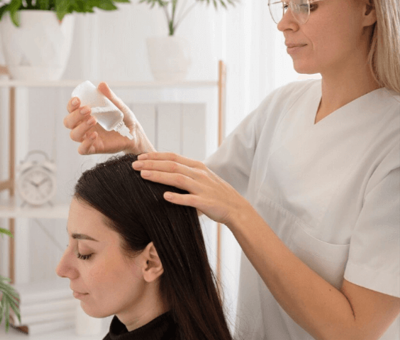Laser teeth whitening is a quick, convenient cosmetic procedure that’s become increasingly popular among international tourists. Many travelers opt to squeeze in a whitening session just before heading home or in between sightseeing stops.
But is it safe to fly right after the procedure? Here’s everything you need to know about flying after laser teeth whitening, including potential side effects, timing tips, and post-flight care advice for tourists.
✈️ The Short Answer: Yes, You Can Fly After Laser Whitening
In most cases, it’s completely safe to fly right after having laser teeth whitening done. The procedure is non-invasive and typically doesn’t require anesthesia or downtime.
However, while you can technically board a plane, there are a few important considerations that may affect your comfort and the long-term results of your treatment.
🦷 What Happens During Laser Teeth Whitening
Laser teeth whitening involves:
- Application of a peroxide-based whitening gel to your teeth
- Activation with a laser or LED light to accelerate the bleaching process
- Protection of gums and soft tissues during the procedure
- Possible mild tooth dehydration, which enhances short-term whiteness but increases sensitivity
The entire session lasts about 45–90 minutes, and results are immediate.
🚨 Post-Treatment Considerations Before Flying
1. Tooth Sensitivity May Be Heightened
After whitening, it’s common to experience temporary tooth sensitivity to:
- Cold air
- Pressure changes (such as cabin altitude)
- Hot or cold drinks
Airplane cabins are typically cool and dry, which may trigger discomfort, especially if you already have sensitive teeth.
🔹 Tip: Bring a soft travel toothbrush and desensitizing toothpaste (like Sensodyne) in your carry-on.
2. Dehydration Can Exacerbate Discomfort
Airplane cabins have lower humidity, which can:
- Dry out your mouth
- Intensify tooth dehydration
- Increase perceived sensitivity or “zings” in your teeth
💧 Stay hydrated before and during the flight. Sip water often and avoid alcohol or caffeine immediately after your procedure.
3. You’ll Need to Follow Dietary Restrictions Mid-Flight
After laser whitening, you’re advised to follow the “white diet” for 24–48 hours. This helps prevent newly whitened teeth from absorbing stains while the enamel rehydrates.
This means avoiding foods and drinks like:
- Coffee, tea, red wine, cola
- Tomato-based or soy-based meals
- Dark fruits and juices (grape, berry, pomegranate)
✈️ Airline meals often contain sauces or drinks that should be avoided post-whitening. Plan ahead and bring your own safe snacks (like rice cakes, bananas, white bread, or grilled chicken).
4. You May Not Be Able to Brush Mid-Flight
While it’s not a health risk, if you eat or drink something stain-causing on a long-haul flight, you may not have the chance to brush your teeth immediately, which could affect your whitening results.
🪥 Pack a travel-sized whitening-safe toothpaste, mouth rinse, or sugar-free gum to reduce residue between meals.
🕒 Best Timing Tips for Whitening and Flying
If possible, schedule your whitening treatment with these recommendations in mind:
| Flight Schedule | Best Whitening Timing |
|---|---|
| Flying the same day | Book whitening at least 4–6 hours before departure |
| Flying the next morning | Opt for whitening the previous afternoon or evening |
| Long-haul international flight | Try to whiten 24 hours before flying |
| Flying within 2–3 hours post-treatment | Be ready to manage mild sensitivity and bring care products |
🌍 Why Many Tourists Whiten Before a Flight
Some people purposely schedule laser whitening right before flying home because:
- They want to return with a noticeably brighter smile
- It’s their final stop in a dental tourism itinerary
- They prefer to recover at home, rather than on vacation
As long as you follow post-care instructions, it’s safe and efficient to fit the treatment into your final travel day.
🧳 What to Pack If You’re Flying Post-Whitening
Here’s a quick checklist for your travel bag:
- ✅ Desensitizing toothpaste
- ✅ Reusable straw (to drink without staining teeth)
- ✅ Toothbrush and fluoride mouthwash
- ✅ White diet snacks (boiled eggs, yogurt, rice cakes)
- ✅ Lip balm (for dry cabin air)
- ✅ Pain reliever (e.g., ibuprofen, if advised by the dentist)
🗣️ Pro Tip: Let Your Dentist Know You’re Flying Soon
Before your treatment, inform the clinic staff of your travel schedule. They may:
- Adjust whitening strength if your enamel is thin or sensitive
- Offer additional protective gels or sealants
- Provide take-home kits for touch-ups after your flight
✅ Conclusion: Yes, You Can Fly After Laser Whitening—With Some Preparation
Laser teeth whitening is a safe, quick treatment for tourists, even if you’re flying the same day. While there’s no medical reason you can’t fly afterward, tooth sensitivity, dehydration, and dietary limitations can affect your comfort and results.
With the right timing, travel prep, and aftercare tools, you can enjoy your flight home—and land with a radiant, refreshed smile that lasts long after your vacation ends.




